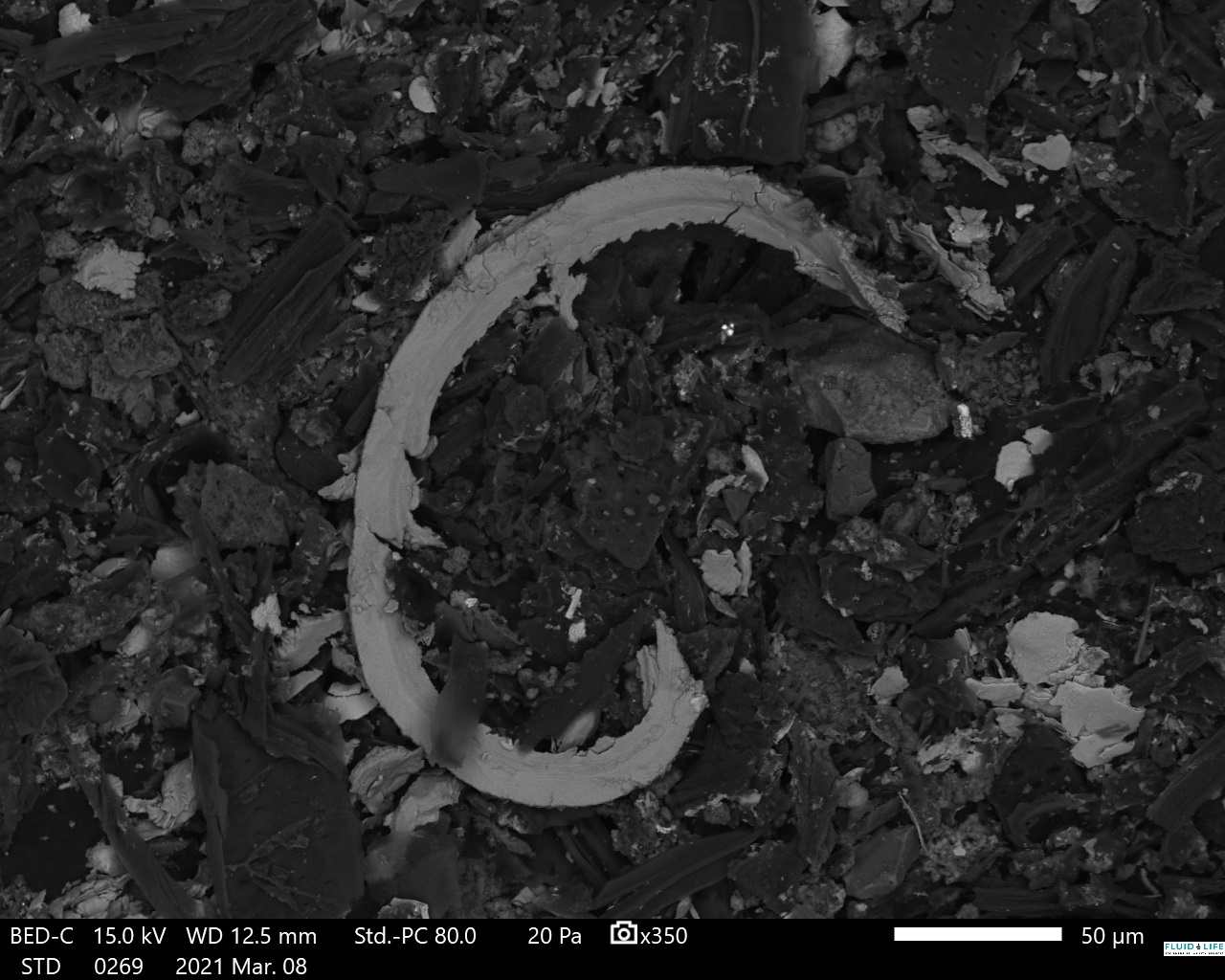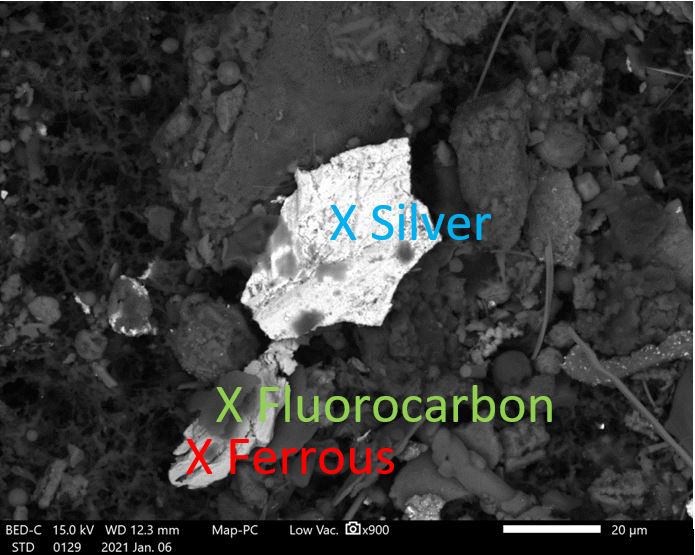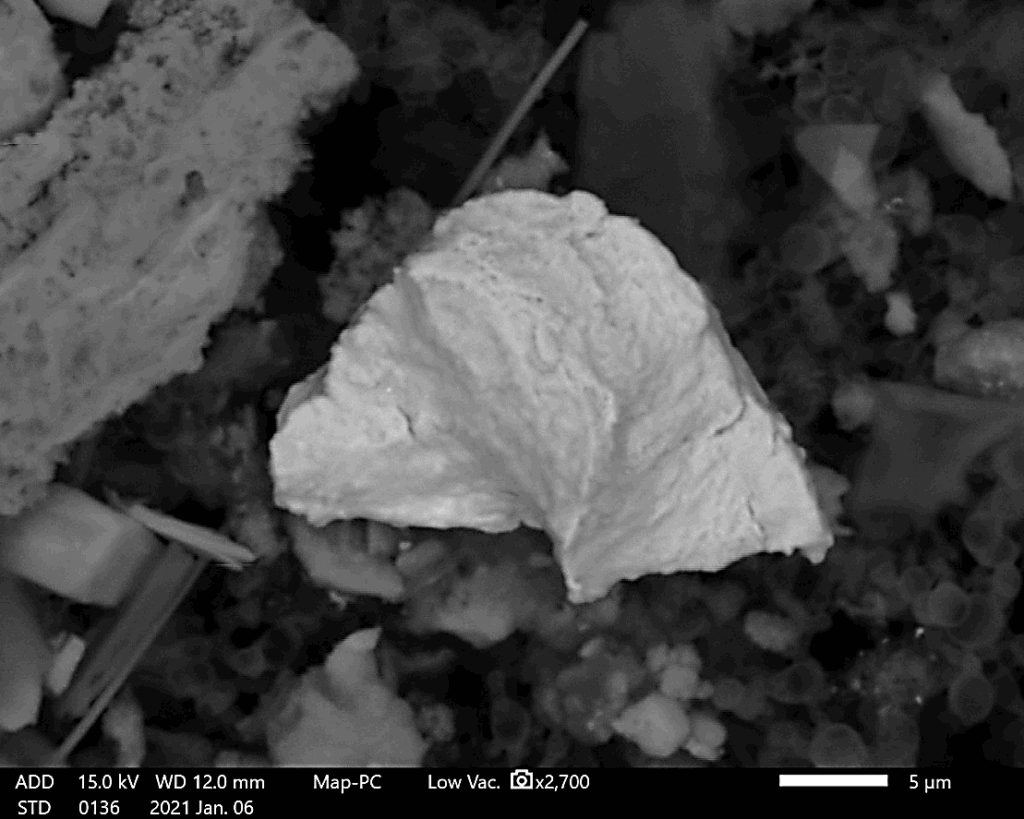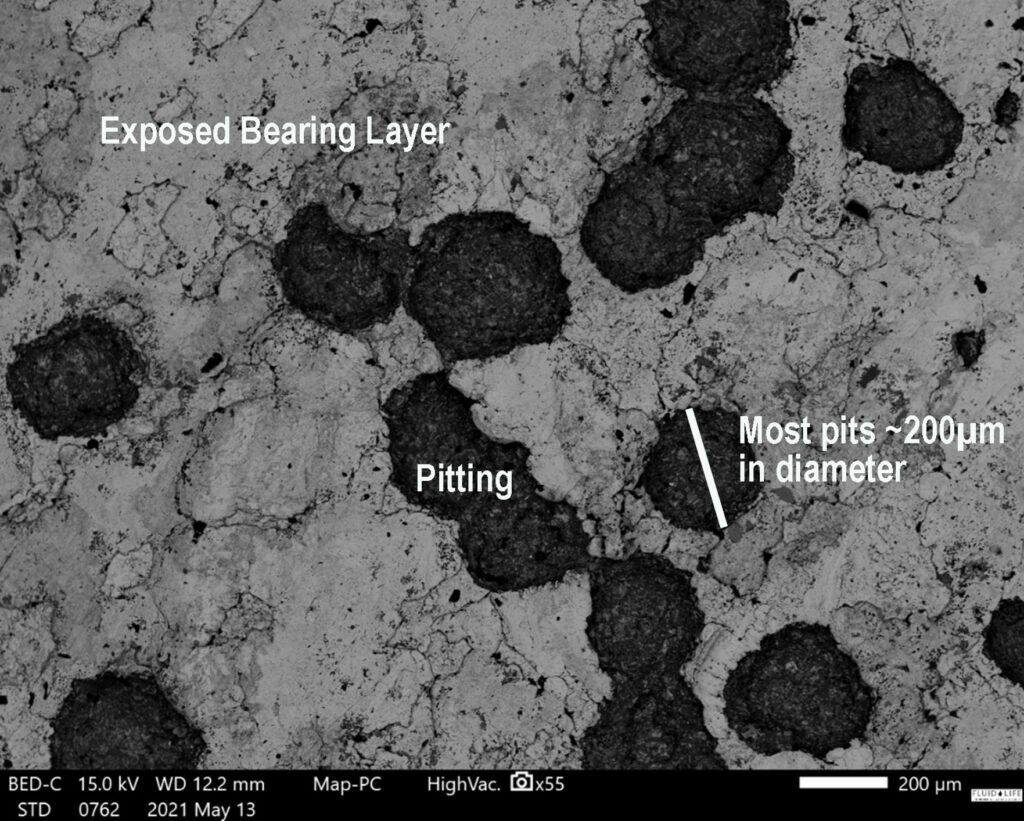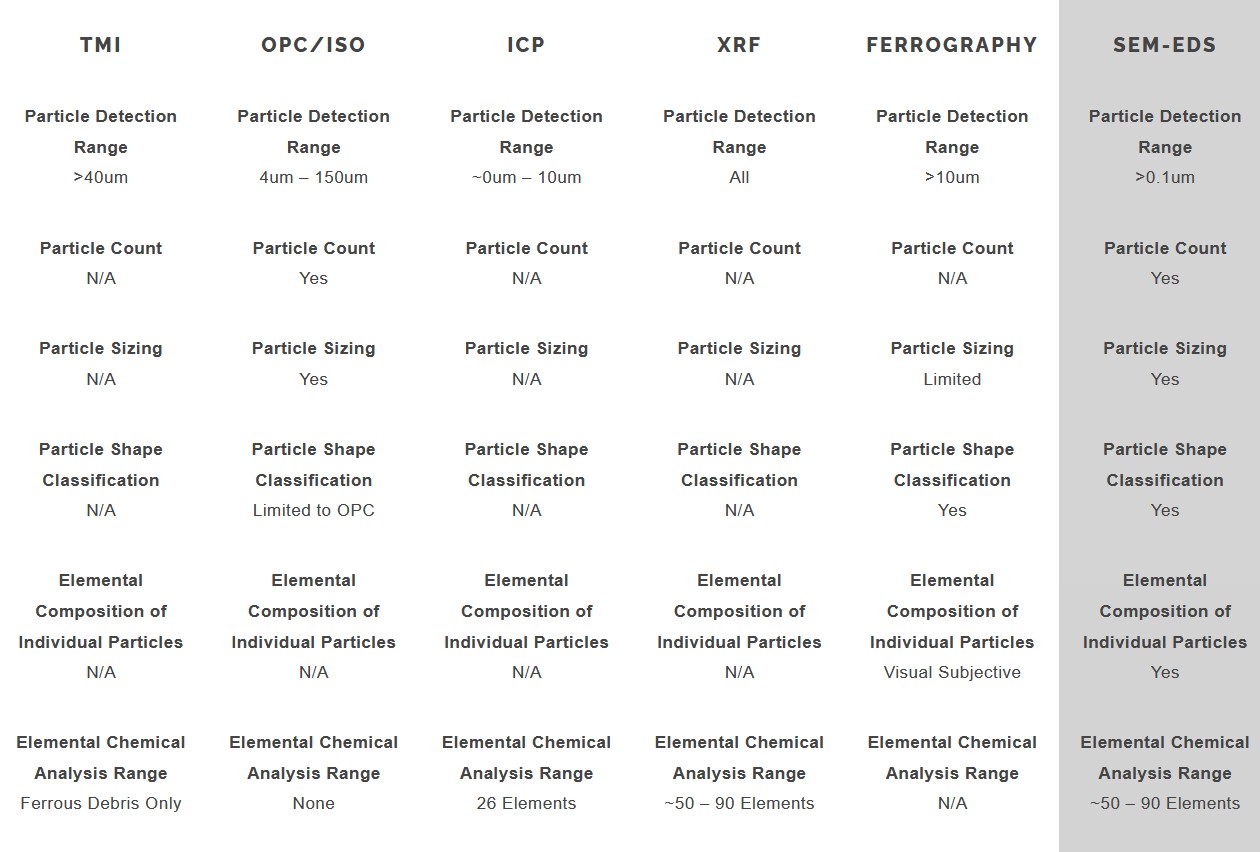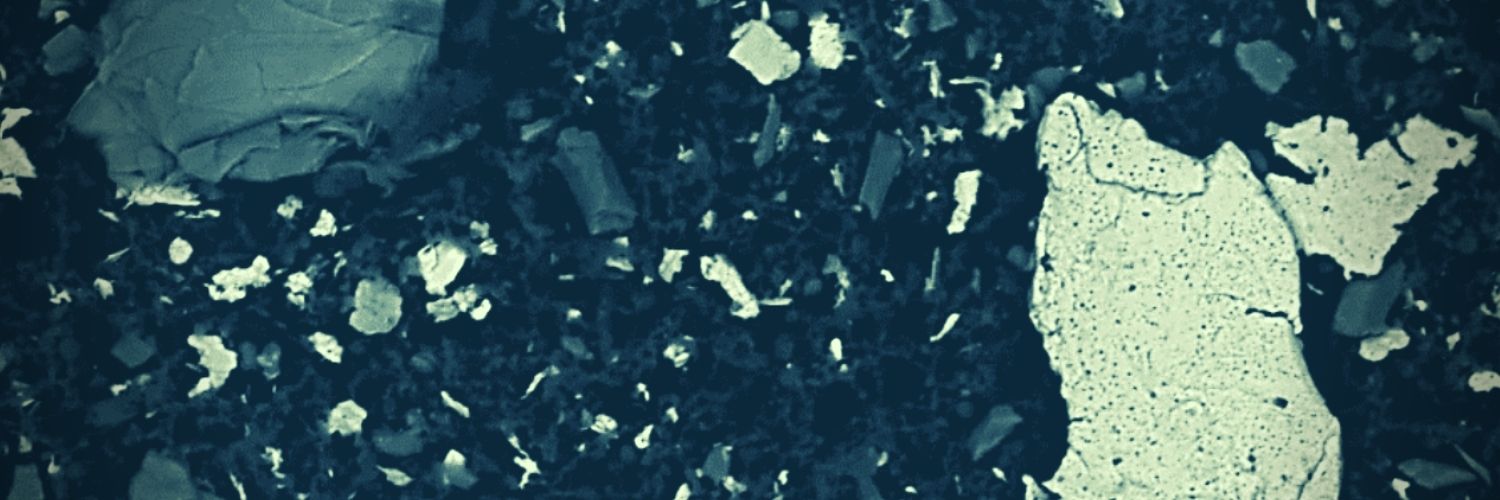- Detects Large Particles missed by spectrometry
- Determines size, elemental composition
- Detects abnormal wear modes including spheres, cutting and fatigue wear
- Determine the cause and source of Copper wear: Differentiate between cooler core leach, bearing wear and bushing wear.
- Monitor the progression of bearing wear through multi-layer bearings and monitor bearing overlay, nickel barriers, intermediate layers and abnormal wear into the support shell.
- Differentiate Aluminum wear from outside contamination
- Perform accurate particle counts on in-service Diesel Engine Oils
- Monitor Cleanliness and Contamination against baselines and target
This method and world class laboratory automation enables complete SEM analysis and critical component protection to become a cost-effective pillar of your ROUTINE condition monitoring program.


